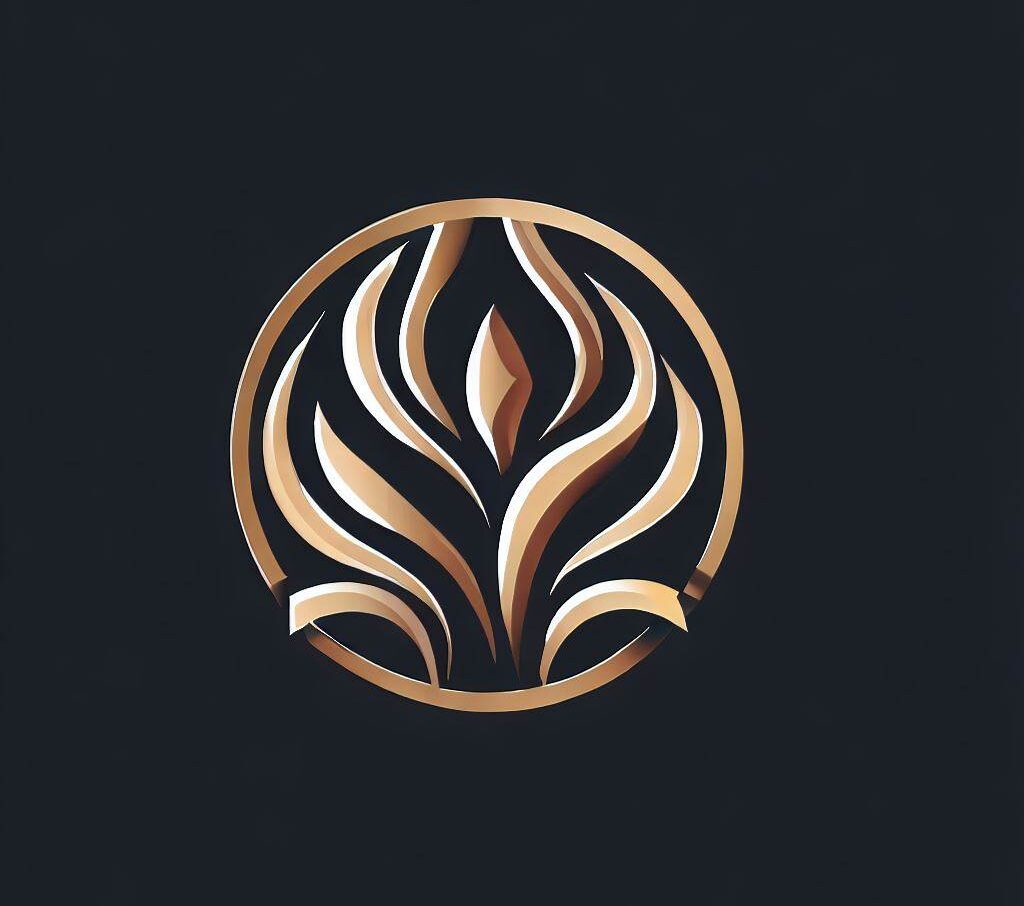Hello and welcome to my exploration of the biblical meaning of indigo. As a professional copywriting journalist, I am excited to delve into the symbolic colors and spiritual insights associated with indigo in religious scripture.
Throughout this article, we will analyze the references to indigo in the Bible, explore its significance in biblical times, and uncover the deeper spiritual meaning of this color. Join me on this journey as we learn about the fascinating world of indigo in the Bible.
Key Takeaways:
- The Bible contains references to the color indigo and its symbolic significance
- Indigo has historical significance in biblical times and was utilized in religious scripture
- Understanding the spiritual meaning of indigo can enhance our understanding of the divine
The Symbolic Significance of Indigo in Biblical Texts
Indigo is a color that holds great significance in biblical texts. The color is mentioned multiple times in the Old Testament, and each reference provides valuable insights into its symbolism and spiritual meaning.
The first mention of indigo in the Bible can be found in the book of Exodus, where it is listed as one of the colors used in the construction of the Tabernacle. The use of indigo dye was a symbol of the high value placed on the construction of the Tabernacle and the importance of its purpose.
Another reference to indigo in the Bible can be found in the book of Jeremiah, where the prophet mentions the color in a metaphorical sense. Jeremiah ascribes the color indigo to the heavens and describes it as an aspect of God’s glory.
The book of Ezekiel also contains references to indigo. In one instance, the prophet receives a vision of God’s throne, which is described as being surrounded by a rainbow that includes the color indigo. This vision signifies the divine presence of God and his power.
Overall, the symbolic significance of indigo in biblical texts is far-reaching and provides deep insights into the nature of divinity and spirituality. The references to indigo color provide a window into the way the ancient Israelites viewed the world and the importance they placed on spiritual matters.
The Interpretation of Indigo Symbolism in the Bible
The interpretation of indigo symbolism in the Bible is complex and varied. Some scholars view the color as representing royalty and divinity, while others see it as a symbol of suffering and mourning.
One prevalent interpretation of indigo symbolism in the Bible is that it represents the divine nature of God. The color indigo is often associated with the sky and the heavens, which are viewed as manifestations of God’s power and glory. In this sense, indigo represents the divine presence and the eternal nature of God.
Another interpretation of indigo symbolism in the Bible is that it is a symbol of mourning and penitence. The color is often associated with darkness and sadness, and it is used in the Bible to represent the sorrow and repentance of individuals who have sinned against God.
Overall, the interpretation of indigo symbolism in the Bible is multifaceted and requires careful study to fully grasp its meaning and significance. Understanding the way the ancient Israelites viewed indigo and its symbolism can provide valuable insights into the nature of spirituality and the divine.
The Spiritual Meaning of Indigo in the Bible
The spiritual meaning of indigo color in the Bible goes beyond its physical representation. It has been used symbolically to represent profound spiritual concepts and insights. Indigo is often associated with higher levels of consciousness, intuition, and spiritual awakening.
In biblical literature, indigo is a symbol of the divine and is often used to represent the presence of God. It also represents the royalty and authority of God. In the book of Exodus, indigo is mentioned as one of the primary colors used in the construction of the tabernacle, which was considered God’s dwelling place on earth.
Indigo is also associated with purity and cleansing. In the book of Numbers, the Israelites were commanded to use a blue (indigo) cloth to purify the unclean. This again highlights the spiritual significance of indigo, representing the power of God to cleanse and purify the soul.
Indigo is a color that stimulates deep contemplation and meditation. It is believed to have a connection to the third eye chakra, which is associated with intuition and spiritual vision. The use of indigo in the Bible emphasizes the importance of spiritual awareness and attaining higher levels of consciousness.
The spiritual meaning of indigo in the Bible is not limited to its color but also extends to the symbolism associated with it. Indigo is a symbol of wisdom, justice, and transformation. It represents the transformative power of God to change our lives and lead us to a higher spiritual plane.
Understanding the spiritual meaning of indigo in the Bible can facilitate a deeper connection with God and offer spiritual insights that can guide our daily lives. It can also serve as a reminder of the divine truth that exists within us all and inspire us to seek spiritual growth.
Indigo Dye in Biblical Times: Significance and Uses
During biblical times, indigo dye was highly valued and utilized for various purposes. The significance of indigo dye in religious scripture is evident in the instructions given to the Israelites for the construction of the tabernacle. In Exodus 25:4, God commands Moses to use blue, purple, and scarlet yarn, as well as fine linen and goat hair, for the curtains and coverings of the tabernacle.
Indigo, being a shade of blue, was likely one of the colors used for the tabernacle. The Israelites also used indigo dye for their clothing, as mentioned in Jeremiah 10:9, which describes the clothing of idolaters as being “blue and purple.”
Indigo dye was also used for medicinal purposes. In the Talmud, a collection of Jewish law and tradition, it is stated that “when one has a headache, he should take wool, dye it with indigo, wrap it around his head, and lie down in a dark place” (Shabbat 66b). This practice was believed to alleviate headache pain.
The use of indigo dye in biblical times was not limited to the Israelites. The ancient Egyptians also used indigo for their clothing and funerary practices. The Book of the Dead, an ancient Egyptian funerary text, describes the linen bandages used to wrap the mummies as being colored with indigo.
Overall, the significance of indigo dye in biblical times was multi-faceted, encompassing both practical and symbolic purposes. Its use in religious scripture, clothing, and medicine highlights its value and importance in ancient cultures.
Biblical References to Indigo Hues
The Bible contains several references to the color indigo, which is mentioned as one of the hues used in the construction of the Tabernacle (Exodus 25:4). The Israelites were instructed to use blue, purple, and scarlet yarns, as well as fine twisted linen, to create the curtains and coverings of the Tabernacle (Exodus 26:1). The color indigo is often associated with royalty and nobility, and its use in the Tabernacle suggests that it held great significance in religious and spiritual contexts.
The Hebrew word for indigo is ‘argaman’, which is derived from the root word ‘ragam’, meaning to be or become dark. The word is used to describe a deep, rich shade of blue-purple that was highly valued in ancient times. In fact, indigo dye was considered a luxury item and was often used to color the clothing of wealthy individuals and members of the royal court.
The biblical explanation of indigo hues is not always clear or straightforward, and there is some debate among scholars about the precise shade of indigo that is being referred to in certain texts. However, it is generally agreed that indigo is a symbol of nobility, spirituality, and divine authority.
Biblical References to Indigo Hues: Examples
In the book of Ezekiel, the prophet receives a vision of a man with the appearance of bronze who is holding a linen cord and a measuring reed (Ezekiel 40:3). The cord is said to be made of ‘blue and purple and scarlet yarns’ and serves as a measuring tool for the construction of the Temple. This passage highlights the importance of indigo as a color used in sacred architecture and emphasizes its association with spiritual authority.
In the New Testament, the book of Revelation describes a vision of a throne in heaven, surrounded by a rainbow that ‘had the appearance of an emerald’ (Revelation 4:3). The vision goes on to describe a being sitting on the throne who has the appearance of ‘jasper and carnelian’ and is surrounded by ‘a rainbow that looked like an emerald’ (Revelation 4:2-3). The use of the word ’emerald’ to describe the rainbow suggests that it is made up of multiple colors, including indigo.
The color indigo is also associated with the tribe of Dan in the Old Testament. When the Israelites are encamped in the wilderness, each tribe is assigned a specific location around the Tabernacle. The tribe of Dan is located on the north side of the Tabernacle, alongside the tribes of Asher and Naphtali (Numbers 2:25). According to Jewish tradition, Dan’s tribal color is blue, which is believed to represent the indigo dye that was used to color their garments.
The Symbolic Significance of Indigo: Examples in Scripture
Now that we have explored the symbolic significance and spiritual meaning of indigo in the Bible, let’s examine specific examples in scripture that highlight its importance.
In the Book of Exodus, the Lord instructs Moses to make a veil for the Ark of the Covenant from fine linen, blue, purple, and scarlet yarn, and woven into them with a design of cherubim. The blue yarn used in the veil is believed to be indigo, representing the divine presence and royalty.
Another instance of indigo’s symbolic significance can be found in the Book of Ezekiel, where the prophet has a vision of a man glowing like bronze and holding a linen cord and a measuring rod. The cord is said to be the color of indigo and represents God’s justice and righteousness.
Indigo is also mentioned in the Book of Esther, where Queen Esther is described as wearing royal garments of fine linen and purple, with an outer robe of gold and indigo. This use of indigo to represent royalty and nobility is a recurring theme throughout the Bible.
Furthermore, the vision of the heavenly throne room in the Book of Revelation describes a rainbow surrounding the throne, which includes the color indigo. This divine use of indigo symbolizes transformation and spiritual enlightenment.
As we can see, the biblical interpretation of indigo symbolism offers valuable insights into its deeper meaning. Examining specific examples in scripture can enhance our understanding and appreciation of the spiritual significance of this color.
Indigo as a Symbol of Divinity and Royalty in the Bible
In the Bible, indigo is associated with divinity and royalty, representing power, wealth, and prominence. It is a color that stands out, much like how divine beings and nobility would stand out in society. The symbolic significance of indigo can be seen in both the Old and New Testaments, with multiple references to its vivid hue.
One example of indigo’s significance is in the description of the veil that separates the Holy of Holies from the rest of the Tabernacle. The veil was made of blue, purple, and scarlet yarn, as well as fine linen, with cherubim embroidered onto it. The use of indigo in the veil symbolized the divine presence and the separation between God and man.
| Biblical References | Meaning |
|---|---|
| Numbers 15:38-39 | God commanded the Israelites to wear tassels on their garments with a cord of blue, reminding them of His commandments. |
| Esther 8:15-16 | King Ahasuerus gave royal clothing to Mordecai, which included a robe of fine linen and purple, with a crown of gold and a cord of purple. |
| Revelation 1:13-16 | Jesus is described as wearing a robe reaching down to his feet, with a golden sash around his chest. His head and hair are white like wool, as white as snow, and his eyes are like blazing fire. His feet are like bronze glowing in a furnace, and his voice is like the sound of rushing waters. |
As seen in these biblical references, indigo symbolizes the divine nature and royal status. The color represents a connection to God and a position of authority and power. It is a reminder of the greatness and majesty of God and the nobility of those chosen by Him.
The use of indigo in biblical literature serves as a visual representation of the divine and holy, reminding us of the power and sovereignty of God and His chosen people. It is a color that demands attention and respect, just as God and His kingdom do.
The Timeless Relevance of Indigo in a Biblical Context
It is fascinating to reflect on the significance of indigo dye in biblical times and how it is portrayed in religious scripture. The indigo color was highly valued and utilized in various ways during this period, including in the production of fabrics for priestly garments and as a dye for the Tabernacle curtains.
But it is not just the uses of indigo that are relevant; it is also the symbolism associated with this color. The biblical interpretation of indigo symbolism offers valuable insights into the spiritual meaning of this hue.
As we examine the references to indigo color in biblical texts, we come to understand the deeper significance of this hue. It is associated with royalty and divinity, and is considered a color of great importance.
But what makes indigo’s relevance timeless is its interpretation and understanding. The symbolism associated with this color continues to hold significance in modern times, giving us a better understanding of the divine and our spiritual journeys.
When we embrace the deeper meanings of indigo, we are tapping into something beyond the physical. This hue can guide us towards greater spiritual awareness, allowing us to connect with something greater than ourselves.
Thus, the significance of indigo dye in biblical times, its depiction as a color of importance in religious scripture, and its interpretation as a symbol of divinity and royalty are all essential to our understanding of the timeless relevance of indigo in a biblical context.
Conclusion
In conclusion, exploring the biblical meaning of indigo offers us a deeper understanding of its symbolic significance, spiritual insights, and historical context. As we have seen, the references to indigo color in biblical texts provide valuable insights into its symbolism and its role in religious scripture.
By embracing the deeper meaning of indigo, we can enhance our understanding of the divine and illuminate our spiritual journeys. The timeless relevance of indigo in a biblical context is a testimony to its importance in human history and culture.
As we continue to explore the significance of indigo in the Bible, let us remember that it is not merely a color, but a symbol of divinity and royalty. May our journey towards understanding the meaning of indigo inspire us to seek a deeper connection with the divine and a greater appreciation for the beauty of God’s creation.
Thank you for joining me on this journey of discovery. I hope this study has shed light on the fascinating world of indigo in the Bible and given you a new perspective on this enigmatic color.
FAQ
Q: What is the biblical meaning of indigo?
A: The biblical meaning of indigo refers to its symbolic significance and spiritual insights associated with this color in religious scripture.
Q: What is the symbolic significance of indigo in biblical texts?
A: Indigo holds symbolic significance in biblical texts and is often interpreted to represent various concepts such as divinity and royalty.
Q: How is indigo used in the Bible?
A: Indigo is referenced in the Bible to describe color variations and is utilized as a symbol in specific instances to convey deeper spiritual meanings.
Q: What is the significance of indigo dye in biblical times?
A: Indigo dye held significance in biblical times as it was valued and used in religious scripture for its color and symbolism.
Q: Are there specific biblical references to indigo color?
A: Yes, the Bible contains references to indigo hues and offers explanations for the variations of this color.
Q: Can you provide examples of the symbolic significance of indigo in scripture?
A: Certainly! There are specific examples in scripture that highlight the symbolic significance of indigo, and we will analyze these instances in detail.
Q: How is indigo associated with divinity and royalty in the Bible?
A: Indigo is often associated with divinity and royalty in the Bible, and we will explore the symbolic representations of indigo in relation to these concepts.
Q: Does the biblical interpretation of indigo symbolism continue to hold relevance today?
A: Yes, the understanding and interpretation of indigo symbolism continue to hold significance in modern times, offering timeless insights within a biblical context.






